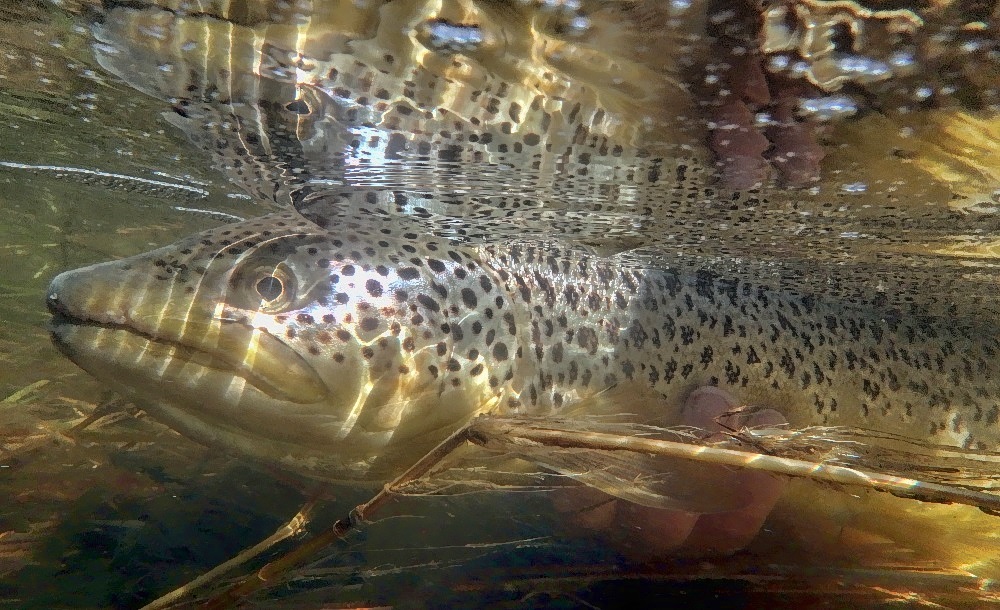Here is my first attempt at an SBS. This is a dry tied with CDC using the Petitjean Magic Tool. Anyone who has used one will tell you that two hands are required therefore using a camera at the same time was a problem and as much CDC landed on the floor as on the fly. Anyhow enough of my excuses!
Tie on thread as normal to the tip of the hook

Tie in a few tail fibres - I have used coc de leon and I like to take one wrap of thread under the fibres to hold them up.

The next stage involves selecting CDC feathers of the same size and stroking the fibres back until they are at right angles to the stem.The feathers must all lie with the stems aligned and all concave? (all curving up!)

The next stage involves using the sprung clip part of the Magic Tool. The stem of the feathers are held at each end and pulled down through the tool. This cause the fibres to stand up away from the tool.


You now snip off the ens of the feathers (stems and tips)


You now take the second part of the Magic Tool kit (similar to an old bulldog clip) and using it to grip the tips of the feathers, you remove the feathers from the sprung clip. This allows you to cut the stems from the feathers leaving only the fibres in the clip.



At this stage you can get back to the fly (remember it?) and flatten out the thread to enable you to split it with a sharp dubbing needle. Some threads work much better than others - it all depends on how they are made. Once the thread is split you insert the fibres into the split (hoping that none fly away when you reach for the camera) and when the two sides close on the fibres you can open the clip to release the fibres.

At this stage you must secure the fibres in the thread by spinning the bobbin holder. This twists the thread, causing the fibres to spin out at right angles to the thread. The thread is wound back onto the bobbin ensuring the thread does not unwind.


Now wind the "hackle" up to the eye of the hook, pulling the fibres back as you go.

Whip finish after tying a head.

The finished fly is a bit "scruffy" and needs to be trimmed.

After a trim the fishes eye view is like this.

This fly was tied with natural CDC. By combining various colours, you can change the look of the fly - this one was a combination of black and yellow.


It would appear to be a long-winded process but once you get the hang of it, it is actually very effective. I generally use 4 feathers per fly and find that they float with little difficulty - often with the application of some CDC oil. I believe there are videos of Marc Petitjean on Youtube if you want to see the expert at work!
I hope that this makes sense.
All the best
Peter

